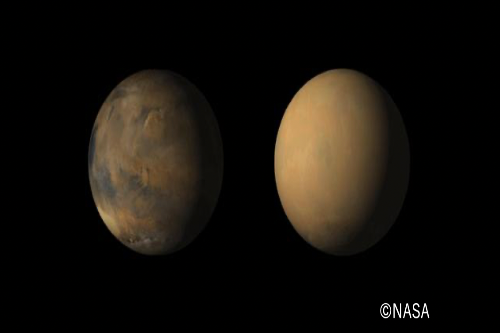An intense zonal wind in the martian mesosphere during PEDE

Recent studies found that the water vapor has been transported up to 100 km during planet-encircling dust event (PEDE) in both north and south hemispheres using the Atmospheric Chemistry Suite (ACS) and Nadir and Occultation for Mars Discovery spectrometer (NOMAD) onboard the ExoMars Trace Gas Orbiter (TGO) [Vandaele et al.,2019; Fedorova et al., 2020; Aoki et al., 2020]. The unexpected water at high-altitudes could intensify the loss of water from Mars to space, as the result of photo- dissociation to hydrogen at upper atmosphere [Chaffin et al., 2017; Heavens et al., 2020]. Although mesospheric circulation on Mars is thus largely influenced by the dust event, observational constrain for the mesospheric wind is limited.
In this study, we used the infrared heterodyne spectrometer on the ground-based telescope at Tohoku University to observe the dust storm during the 2018 global dust storm. We directly detected the zonal winds at a height of about 80 km, known as the mesosphere. We found that the strong easterly wind over 200 m/s was blowing in the mesosphere during the global dust storm. This is about 140 m/s faster than the normal atmosphere.






